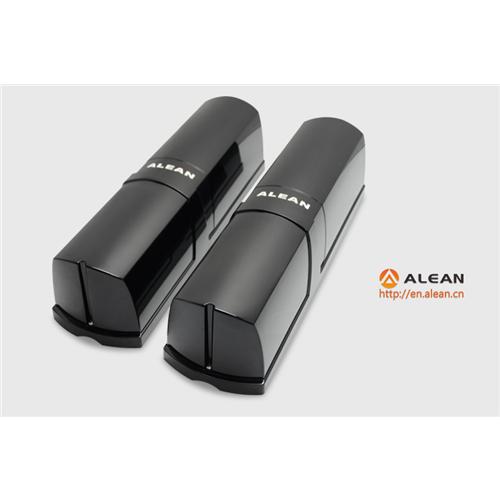Hot sale Photoelectric Beam Detector High Quality Quad Beam 4channel frequency Beam Sensor
Key Specifications
Hot sale Photoelectric Beam Detector High Quality Quad Beam 4channel frequency Beam Sensor
Outdoor 50M to 250M optional for detecting range.
QUAD BEAM DETECTOR
Model ABH-50L ABH-100L ABH-150L ABH-200L ABH-250L
Outdoor Range Outdoor 50m 100m 150m 200m 250m
Indoor 150m 300m 450m 600m 750m
Maximum Arrival Distance 300m 600m 900m 1200m 1500m
Detection Method Simultaneous interruption of 4 infrared beams or a group of 2 infrared beams
Interruption Time 50msec, 100msec,300msec,700msec (corresponding to 20,21,22,23)
Beam frequency 4 channel selectable (corresponding to 10,11,12,13)
Power Supply DC12~24V; AC11~18V (12VDC recommendable)
Current Consumption 70mA max 80mA max 90mA max 100mA max 110mA max
Alarm Period 2sec (±1)
Alarm Output 1C. relay output (AC/DC30V, 0.5A max)
Tamper Switch NC, opens when cover removed
Operating Temperature -25℃ to +55℃
Environment Humidity 95% max
Alignment Angle Horizontal 180°(±90°), Vertical 20°(±10°)
Mounting Wall or Pole
Protection Degree IP65
Material PC engineering plastic
Dimension (L*W*H) 92*90*291mm
Weight (Transimtter and Receiver) 2200g
"Heaters
(additional purchase)" Voltage 12V
Current 200mA max
Termperature +70℃
The infrared barriers, are based on the projection of infrared light beams (not visible),
between a sender and a receiver element, so as to interrupt the link beam both elements,
the alarm activation occurs corresponding.
The infrared light emission occurs through a semiconductor (LED type) of gallium arsenide
with a wavelength of 800-1000 Nm.
A single control element consists of a transmitter and a receiver, including distance apart
to be protected (depending on model) and power connections and alarm signals to the central station.
This latest installment we cover only the protected area the infrared beam, which in conventional s
ystems is often combined several transmitters and receivers in parallel to obtain a real barrier,
and as the naked eye do not look, They are inserted into columns of dark polycarbonate, which hide
the exact position of the transmitters within it.
Applications
The infrared barrier system is particularly suitable for covering parallel enclosed by walls or
fences, which do not allow closing with another system, where besides the lack of space is an issue
areas.
